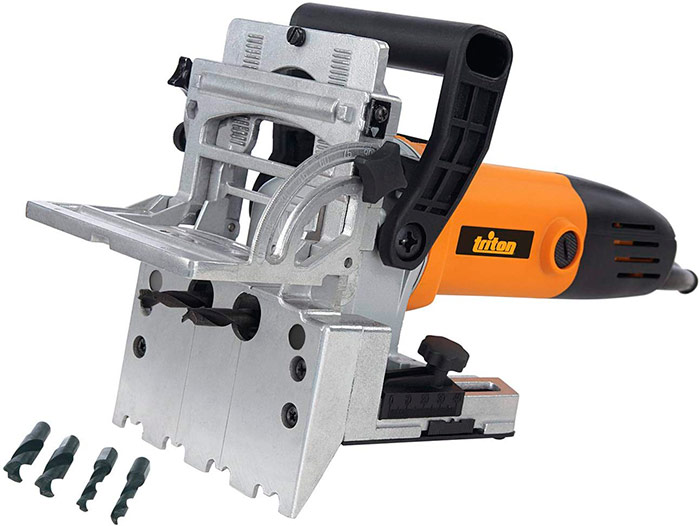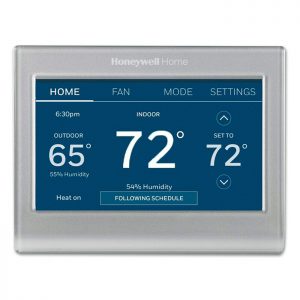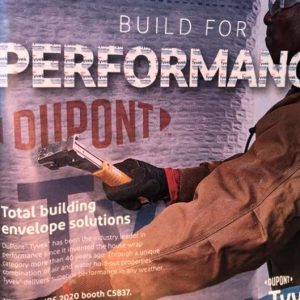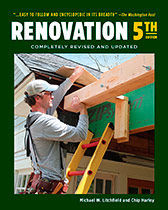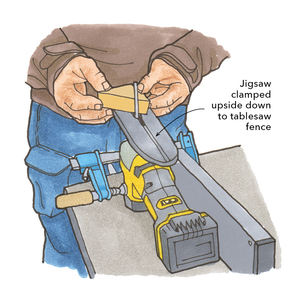Podcast 232: Ugly Elevations, Roofing Under Solar Panels, and “Dumb” Wi-Fi Thermostats
The regular crew hears form listeners about handyman work, Festool Domino substitutes, and Permanent Wood Foundations before taking questions about attractive elevations, solar panels, and an easy-to-use remote thermostat.
Follow the Fine Homebuilding Podcast on your favorite app. Subscribe now and don’t miss an episode:
 |
 |
Valon writes in about his handyman business. Carroll describes a dowelling machine. Mike Guertin describes his experience with permanent wood foundations. Troy asks how to design a good-looking house. Mike wants to know if he has to replace his roof before he gets new solar panels. Ken is looking for a low-tech Wi-Fi thermostat and Will asks for help with an efficient setup for moving and storing tools.
Listener Feedback:
Listener feedback #1
Valon, a Home Improvement Contractor in Brooklyn, NY writes, Hello FHB Podcast, I’m a huge fan of the podcast. I’ve listened to every episode and have learned a lot, including a ton about roof venting. Keep up the great variety of episodes. I’m writing in response to the handyman discussion in episode 227.
It is possible to make a decent amount of money having a handyman service as a standalone or part of a contracting business. I am a Home Improvement Contractor in Brooklyn, NY and I have a handyman service as part of my company. Kitchens and baths are my main line of work, but I also do handyman work–from furniture assembly to light electrical and plumbing.
For me, it’s easier to scale small jobs down to a handyman service when I don’t have to write up a detailed contract. I have experience on the Handy platform. When they first “launched” in NYC I was making about $4,000 a month off of the platform before they got greedy. So, to build up my own service, I incorporated their 2 hour minimum model and raised the rates to a number that works for me. So for example, I charge $75 per hour for light electrical / plumbing. With my minimum, that’s $150 for the job. So if I get hired to replace an outlet, which takes literally a few minutes, I still make enough profit to cover my time, travel, and other expenses. I also charge for material and add a markup.
I’ve built up a large number of handyman clients. Often these relationships lead to larger jobs and long-time relationships. Another benefit is the handyman work makes good schedule fillers for slow times when people are not really remodeling or renovating, but still have things they need done around the house.
Carroll writes, Good morning Fine Homebuilding podcast crew. In episode #230 I heard Patrick talking about the Festool Domino and it made me think back to a few years ago when I was in the same position. I found the Triton Dowelling Jointer. It is like the Domino but uses dowels. You can find it for $206 on Amazon.
Enjoy the show and keep up the good work.
Related links:
- Festool Domino
- Triton Dowelling Jointer 710W
- Triton YouTube video
- Sharp Edge Woodworking review of the Triton
Listener feedback #3
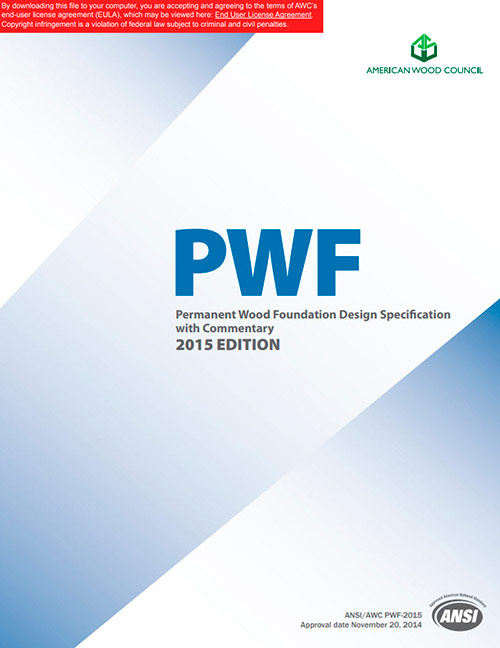 Mike Guertin writes, Dear Podfolks, I continue to enjoy listening to the podcast – especially when you get out ahead of your skis and discuss topics and offer opinions on systems you haven’t worked with. Part of me laughs and the other part wants to jump in and offer a little more insight and perspective.
Mike Guertin writes, Dear Podfolks, I continue to enjoy listening to the podcast – especially when you get out ahead of your skis and discuss topics and offer opinions on systems you haven’t worked with. Part of me laughs and the other part wants to jump in and offer a little more insight and perspective.
I like permanent wood foundations and have built a number of them. My father (a non-builder) turned me onto them in the early 80’s when he wanted to add a shop on the side of his house for working on his antique cars. With the sloping grade around his house it made sense build two of the walls below grade. Budget being a factor he was on the lookout for any cost saving measures. He came across a Permanent Wood Foundation installation guide published by the USDA Forest Products Lab. He showed the guide to the local building official who shrugged his shoulders (he knew there was no sense trying to talk my father out of anything) and issued the permit. The shop’s still standing after 35 years and the treated lumber looks as good as new.
In the late 80s we were building 4+ unit apartment buildings and settled on PWFs for several reasons.
• Cost savings.
• Time savings – we built panels off site and were able to excavate, spread gravel / stone, erect the panels, set joists and backfill in a day and half with a crew of 5 on a building 30′ x 80′. And closing up the hole fast minimized the chance kids in the neighborhood would turn the site into a play area.
• Site conditions – on small infill city lots there was no room for overdigging the foundation hole as is usually needed when setting concrete forms.
• Seasonal conditions – we were building in winter when placing concrete can be tricky with below freezing temps. PWFs don’t care what temperature it is.
The city inspectors weren’t familiar with PWFs and asked us to get approval from the state Building Commissioner even though PWFs were permitted in the CABO code. The meeting was informative. Turns out the building commissioner had been on the BOCA committee that reviewed PWFs for code inclusion and was familiar with and a fan of the system. He explained all of the push-back from committee members and how each point was put rest including the concern that children would be poisoned by the CCA lumber. An expert testified to that noting that a 3-year-old licking the PT lumber from the bottom to the average height of a 3-year-old would wear his or her tongue completely off before ever getting close to reaching measurable levels of arsenic or chromium in their body.
Matt from Minnesota was planning to pour the slab first and then the PWFs on top. I think Matt Millham mentioned that doing so could be a problem since the slab wouldn’t resist the soil pressure on the foundation walls – which is correct. When we poured monolithic slab/footings before placing the PWFs we set a 2×6 inside the perimeter of the slab form. The 2x6s were removed and the PWF panels were set inside the recess and anchored to the concrete beneath with expansion bolts. So if Matt from Minnesota does the same when he places his slab he should be fine.
Matt Millham also noted that the standard PWF detail calls for 6 mil plastic on the outside as waterproofing. We used this detail and it’s okay but today there are many more durable options between membranes and coatings. Waterproofing and perimeter drainage is an issue with any foundation whether it’s concrete, block, pre-cast panel, ICF or PWF.
I’m drafting the foundation / footing details for my next house build – and I’m thinking PWF. It will be a frost-protected shallow foundation using permanent wood footing and stem wall about 12 in. tall. Inside will be cross-layered subfloor sheathing on insulation board for a completely concrete-free foundation and ‘slab’.
Related links:
Editor Updates:
 |
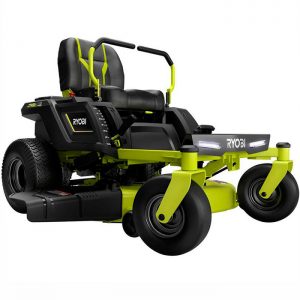 |
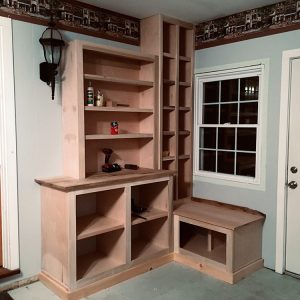 |
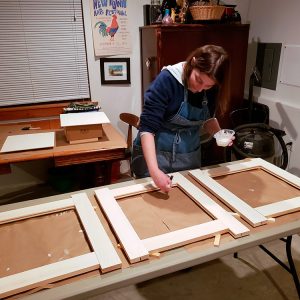 |
Kiley’s Battery-powered mower
Matt’s cabinets
Patrick’s cabinets
Question 1: Can you add the topic of “what makes great design” on future podcasts?
Troy from Portland, OR writes, FHB Team, I know that most of the discussion on the podcast is in the area of Building Science, but I’d like to hear a discussion on the art/design side.
There’s a house just being completed near me, and I’ll share some photos.
Here is the street side: It’s on a corner, so the other street-facing side is here. I guess this is the “front”… And the fourth side: I can’t imagine a more uninspiring, dismal exterior. Thinking about what I don’t like, I’d be interested in a discussion on what in fact makes a great design.
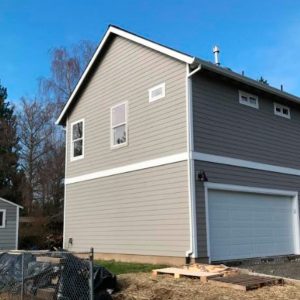 |
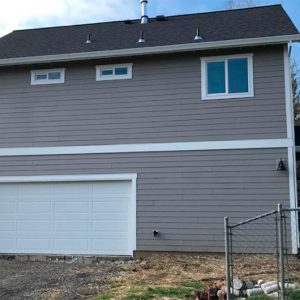 |
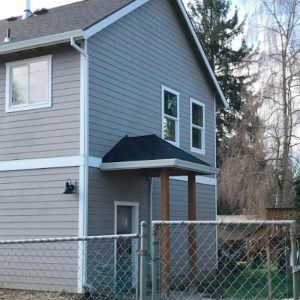 |
 |
Related links:
- Window Placement: Use One Ratio
- To Create a Clean Roofline, Design from the Roof Down
- 3 Architectural Challenges and Solutions
Question 2: Should you get a new roof before installing solar panels?
Mike in VA writes, Hello FHB, We live in. Central Va. and I am considering solar panels. We have a 1750sf ranch with 3 tab asphalt shingles. My concern is how do you replace the roof shingles with panels installed? I assume you must remove all the panels? Is the cost benefit analysis worth installing?
Related links:
- GBA Forum: Replacing a roof to enable solar panel installation
- Solar panel roof replacement logistics (EnergySage.com)
Question 3: Are there any simple, no-frills options for Wi-Fi thermostats?
Ken from Rindge, NH writes, Hi guys and gals, Love the podcast – I am a religious listener and I use both FHB and GBA websites every week. I have a cabin in the woods that has internet and I want to install a thermostat that allows for wifi so I can turn up the heat before I arrive. I do not need a “learning” thermostat and very much despise them! Who are they to say they can “learn” my schedule? When I am at the cabin, I have no schedule – in fact, that’s the purpose of the cabin in the first place! Are there any “simple” wifi thermostats that do not have schedules, 7 day or whatever, and learning modes?
Thanks!
Related links:
Question 4: What’s the most efficient way to set up a job-site workspace?
Will from NJ writes, Hello FHB Podcast Crew, Long time, first time. While I love the building science/air sealing conversation and discussion, I wanted to plumb the depths of your minds on a subject that keeps me up many nights and offer a respite from the somewhat dry (ha-ha) topic of air sealing.
I’m an avid DIYer and currently helping my cousin with some renovations on his house. Any time that I am loading and unloading my car with tools etc, I get to thinking about ways to optimize my tool storage/transportation and my work space when I’m on site.
For tool storage and transportation, I use Dewalt’s Tough System organizers which I find makes the load/unload very efficient since they stack and roll. I started building my collection before the Milwaukee pack out option and before Dewalt revamped the T-stack system so it was a less expensive alternative to systainers.
On site, my current quandary is setting up an efficient work space that is also easy to break down and load into a car. I currently use a variety of saw horses like my pair of Stable Mates which are great because they are big and sturdy but are annoying because they are big and sturdy and don’t function well in tight spaces. I also have various shop made work stations that work well but are time consuming to set up, and heavy and bulky to transport. Mike Maines seems to have an excellent site shop set up as seen in the Project House series site-built cabinets with job site tools but I’m curious what other set ups you have seen/use. What are some innovative site shop set ups, means & methods you’ve seen? (I’m an architect by day and I am amazed how many crews I see with inadequate work holding solutions ie million-dollar cabinets precariously balanced on some rickety saw horses while being scribed to fit or miter saws and tables saws being used on the ground)
I love the podcast, and look forward to listening to it on the days I’m chained to my desk drawing and I look forward to your discussion on this topic. BTW when are y’all gonna do a meet up in NYC?
Best Regards,
William Wallace (yes that’s actually my name, and no I don’t typically where blue face paint, only when freedom is under attack)
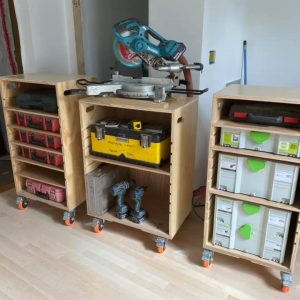 |
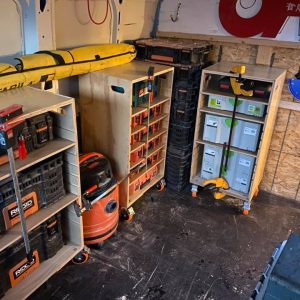 |
 |
Related links:
- Stacking Portable Tool-Storage System
- Toolbox Evolution
- Ron Paulk portable woodworking bench (YouTube)
- Portable Three-Legged Sawhorses
Shared on “Building Knowledge” Facebook page:
Ad for Dupont’s Tyvek at the 2020 International Builders’ Show.
If you have any questions you would like us to dig into for a future show, shoot an email our way: [email protected].
If we use your question we’ll send you a FHB Podcast sticker!
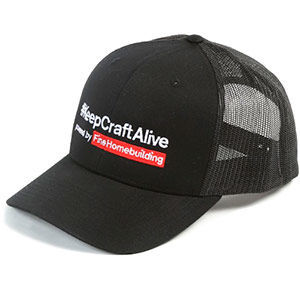 #KeepCraftAlive
#KeepCraftAlive
KeepCraftAlive hats help celebrate the value of true craftsmanship–plus 50% of all proceeds from every hat sold go to the #KeepCraftAlive Scholarship Fund, supported by Fine Homebuilding and SkillsUSA.
Buy a #KeepCraftAlive hat or t-shirt
This episode of the Fine Homebuilding podcast is brought to you by ZIP System building enclosures.
By creating the integrated sheathing alternative to “layered” roof and wall assemblies, ZIP System sheathing and flashing options provide a streamlined approach to exterior water, air and thermal management. Did you know ZIP System has been on the market for over 10 years and not only comes with a 180-Day Exposure Guarantee and 30-Year Limited Warranty, but decades of research from the scientists and innovators at Huber Engineered Woods. Learn why so many building teams have make the switch to ZIP System building enclosures and how to get it on your next project at the new ZIPSystem.com.
Also brought to you by Danner:
If you believe in timeless ideas like quality, craftsmanship, and blazing your own path, I want to introduce you to our friends at Danner who sponsor this podcast. A Pacific Northwest original for over 85 years, Danner makes boots for people with purpose in their step. Boots like the new Steelyard family—featuring 8 different models with game-changing comfort, legendary durability, and performance features for any jobsite. Earn a pair and join the family at Danner.com.
Also brought to you by Benjamin Obdyke:
Benjamin Obdyke would like to use the special occasion of our 150th anniversary to thank the nuisances that builders and homeowners despise. Our premium products protect from those pesky things like rain, snow, UV rays and the neighbor’s sprinkler system. Take HydroGap, a drainable housewrap that eliminates moisture from your wall assembly. Or the new InvisiWrap UV, an all-black WRB, perfect for long-term moisture protection behind open joint siding. Come hang out with our awesome team and see our sexy new solutions at JLC Live, booth 311.
Fine Homebuilding podcast listeners can now get 20% off anything in the Taunton store, including the Renovation 5th Edition.
Use the discount code FHBPODCAST to take advantage of this special offer.
We hope you will take advantage of a great offer for our podcast listeners: A special 20% off the discounted rate to subscribe to the Fine Homebuilding print magazine. That link goes to finehomebuilding.com/podoffer.
The show is driven by our listeners, so please subscribe and rate us on iTunes or Google Play, and if you have any questions you would like us to dig into for a future show, shoot an email our way: [email protected]. Also, be sure to follow Justin Fink and Fine Homebuilding on Instagram, and “like” the magazine on Facebook. Note that you can watch the show above, or on YouTube at the Fine Homebuilding YouTube Channel.
The Fine Homebuilding Podcast embodies Fine Homebuilding magazine’s commitment to the preservation of craftsmanship and the advancement of home performance in residential construction. The show is an informal but vigorous conversation about the techniques and principles that allow listeners to master their design and building challenges.
Other related links
-
- All FHB podcast show notes: FineHomebuilding.com/podcast.
- #KeepCraftAlive T-shirts and hats support scholarships for building trades students. So order some gear at KeepCraftAlive.org.
- The direct link to the online store is here.
